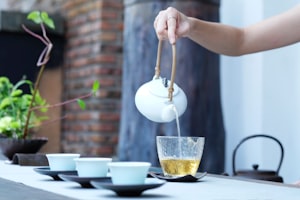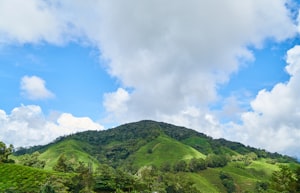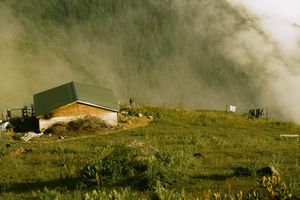Darjeeling Tea: Crafting Excellence in the Himalayan Hills
Darjeeling Tea: A Legacy of Excellence Darjeeling tea, often referred to as the "Champagne of teas," is a unique and highly sought-after beverage produced in the hilly regions of Darjeeling, India. The Tea Board of India defines Darjeeling tea as that which is cultivated, grown, and processed in specific hilly
Oct 19, 2023 3 mins

TOC
Darjeeling Tea: A Legacy of Excellence
Darjeeling tea, often referred to as the "Champagne of teas," is a unique and highly sought-after beverage produced in the hilly regions of Darjeeling, India. The Tea Board of India defines Darjeeling tea as that which is cultivated, grown, and processed in specific hilly zones, yielding a distinctive natural aroma and flavour.
Darjeeling's Unique Terroir
The exceptional qualities of Darjeeling tea are attributed to a combination of natural factors, including the region's slope of hills, soil conditions, mist, cool Himalayan breeze, and rainfall patterns. These elements create an environment that allows the tea bushes to mature slowly, with some gardens boasting bushes that are over 100 years old. The resulting flavour and "muscatel aroma" are unmistakable.
While historically known for producing Black tea, Darjeeling now also offers Green tea, Oolong tea, and White tea, expanding its diversity.
Preserving Authenticity with GI Tag
In 2004, the Office of Controller General of Patents, Designs, and Trademarks awarded Darjeeling Tea the prestigious Geographical Indicator (GI) Tag. This recognition underscores the fact that Darjeeling tea cannot be replicated elsewhere due to its unique natural conditions and centuries-old production methods. These natural factors, combined with traditional practices, make it nearly impossible to recreate this tea's exceptional qualities.
The Cost of Excellence
Darjeeling tea is renowned for its quality, but it comes at a price. Top-quality loose leaf tea can start at INR 700 per kilogram, with auction prices reaching several thousand rupees per kilogram. The high cost is attributed to the "orthodox" production process and the rigorous cultivation standards.
The Four Flushes of Darjeeling Tea
Darjeeling tea is categorised into four flushes, with the second flush being a favorite among connoisseurs for its fruity notes and muscatel flavour. The unique muscatel flavor is a direct result of insect infestation during the hot months of May and June, leading to the production of terpenes that contribute to this delicate taste.
Historical Roots of Darjeeling Tea
The history of Darjeeling tea dates back to the 1800s when the British East India Company sought an alternative source of tea after losing its monopoly in China. Discover how Darjeeling became a premier tea source, dominating the world with its high-quality produce.
Understanding Darjeeling Tea Labels
Much like wine labels, Darjeeling tea labels provide valuable information about the tea's quality and characteristics. Terms like SFTGFOP, FTGBOP, and others indicate the grade and quality of the tea leaves, while suffixes like "ch," "cl," and "spl" specify the type of plant the tea is derived from. Different flushes, including first and second, produce distinct flavours.
Varieties of Darjeeling Tea
Darjeeling tea encompasses a range of varieties, from traditional Black tea to Oolong, Green tea, and White tea. Each type has unique attributes, making Darjeeling a diverse tea-producing region.
The Orthodox Production Process
Darjeeling tea is traditionally produced using the orthodox method. Leaves are selectively plucked, withered, rolled, fermented, and dried according to stringent standards. This manual process ensures the tea's exceptional aroma and flavour.
Organic Darjeeling Tea Gardens
Organic tea gardens in Darjeeling follow strict specifications for ecological sustainability and natural cultivation practices. Makaibari Tea Estate, awarded as the first fully organic tea garden in 1988, sets the standard for organic tea production. Today, about 70% of Darjeeling's tea estates produce organic tea.
Tea Tasting in Darjeeling
Tea tasting is as popular in Darjeeling as wine tasting in Paris. Many tea estates offer structured tea tasting sessions, allowing visitors to explore various tea qualities, flavours, and textures. Learning the art of brewing and tasting Darjeeling tea is an enriching experience for tea enthusiasts.
Brewing the Perfect Cup
To brew the perfect cup of Darjeeling tea, use purified water, store tea leaves in an airtight container, and avoid using metallic infusion balls. Follow specific guidelines for steeping time and temperature to bring out the tea's full flavour. Darjeeling tea is best enjoyed without milk, while Oolong, Green, and White teas have their own brewing techniques.
Where to Buy Darjeeling Tea
If you're in Darjeeling, explore tea lounges and outlets to taste and buy high-quality Darjeeling tea. Notable outlets include Nathmull's, Golden Tips Tea Lounge, and Goodricke Tea. When buying Darjeeling tea online, exercise caution to ensure authenticity. Opt for trusted sources like Makaibari, Gopaldhara, and Goodricke Tea's online shops.
Darjeeling Tea Garden Tours
Tea tourism is a growing trend in Darjeeling, offering visitors a chance to experience the life of tea gardens while enjoying luxury amenities and learning about the tea-making process. Many tea estates now offer home stays that allow budget travellers to immerse themselves in the tea garden lifestyle.
The Future of Darjeeling Tea Industry
Despite historical challenges, the Darjeeling tea industry continues to thrive due to competition, technological advancements, and innovation. The industry's shift from British to Indian ownership and a focus on maintaining the region's unique characteristics ensure that Darjeeling tea will remain a global leader in the world of tea.



